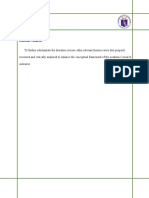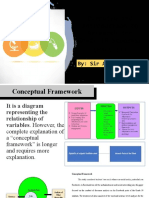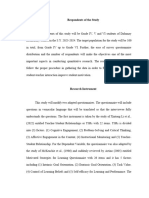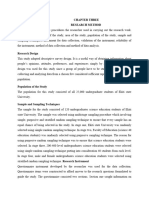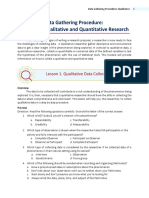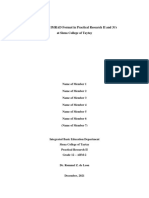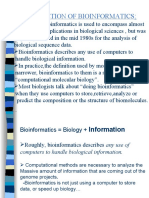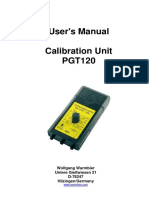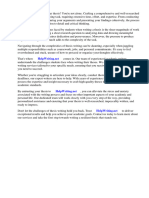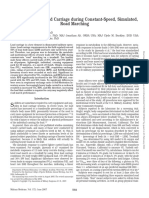0% found this document useful (0 votes)
38 views2 pagesPractice 2 - Data Gathering Methods
The document outlines the data gathering methods used in a research study, including obtaining necessary permissions and informed consent from participants. It describes the use of pre-tests and post-tests, a teacher-made questionnaire, and qualitative focus group discussions to assess the effectiveness of educational video lessons on students' understanding of Health Optimizing Physical Education (H.O.P.E.). The integration of qualitative and quantitative data collection methods aimed to provide a comprehensive understanding of student learning outcomes and engagement.
Uploaded by
malizaaileenCopyright
© © All Rights Reserved
We take content rights seriously. If you suspect this is your content, claim it here.
Available Formats
Download as DOCX, PDF, TXT or read online on Scribd
0% found this document useful (0 votes)
38 views2 pagesPractice 2 - Data Gathering Methods
The document outlines the data gathering methods used in a research study, including obtaining necessary permissions and informed consent from participants. It describes the use of pre-tests and post-tests, a teacher-made questionnaire, and qualitative focus group discussions to assess the effectiveness of educational video lessons on students' understanding of Health Optimizing Physical Education (H.O.P.E.). The integration of qualitative and quantitative data collection methods aimed to provide a comprehensive understanding of student learning outcomes and engagement.
Uploaded by
malizaaileenCopyright
© © All Rights Reserved
We take content rights seriously. If you suspect this is your content, claim it here.
Available Formats
Download as DOCX, PDF, TXT or read online on Scribd
/ 2

















